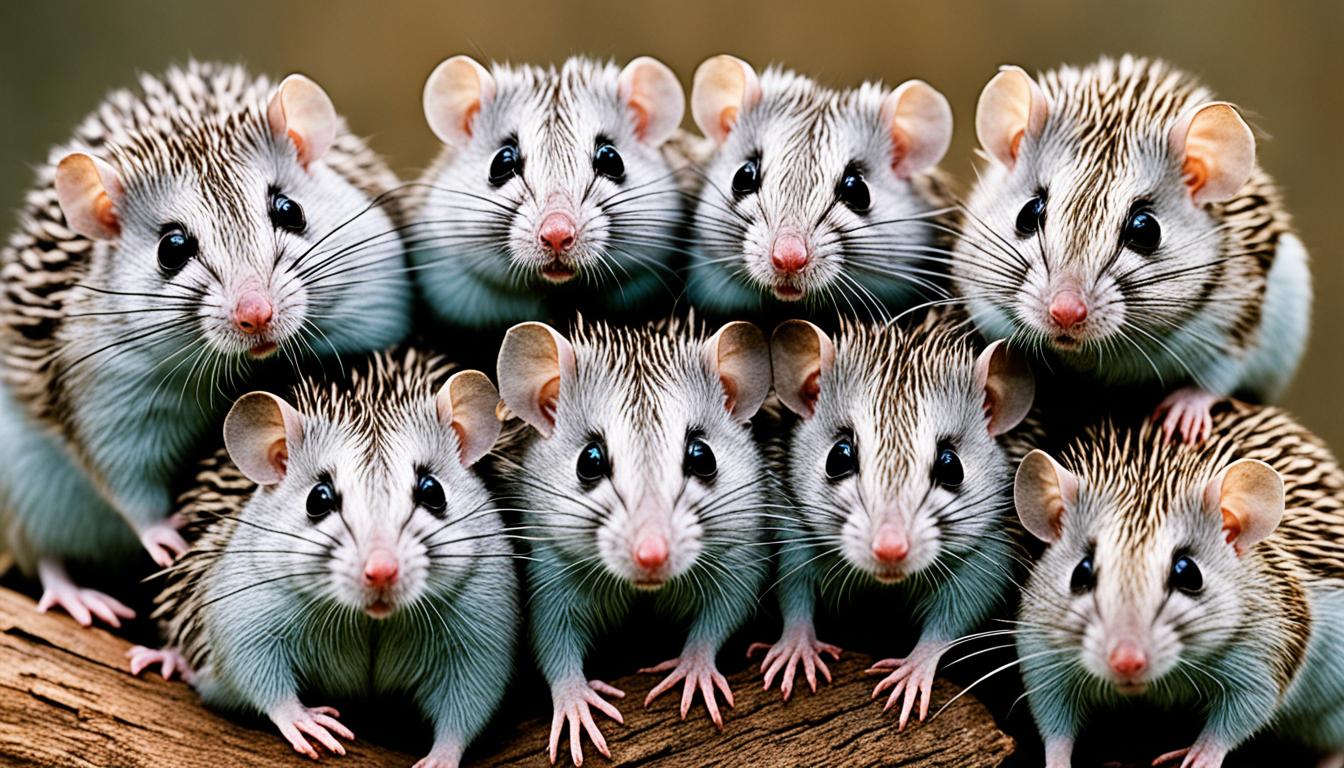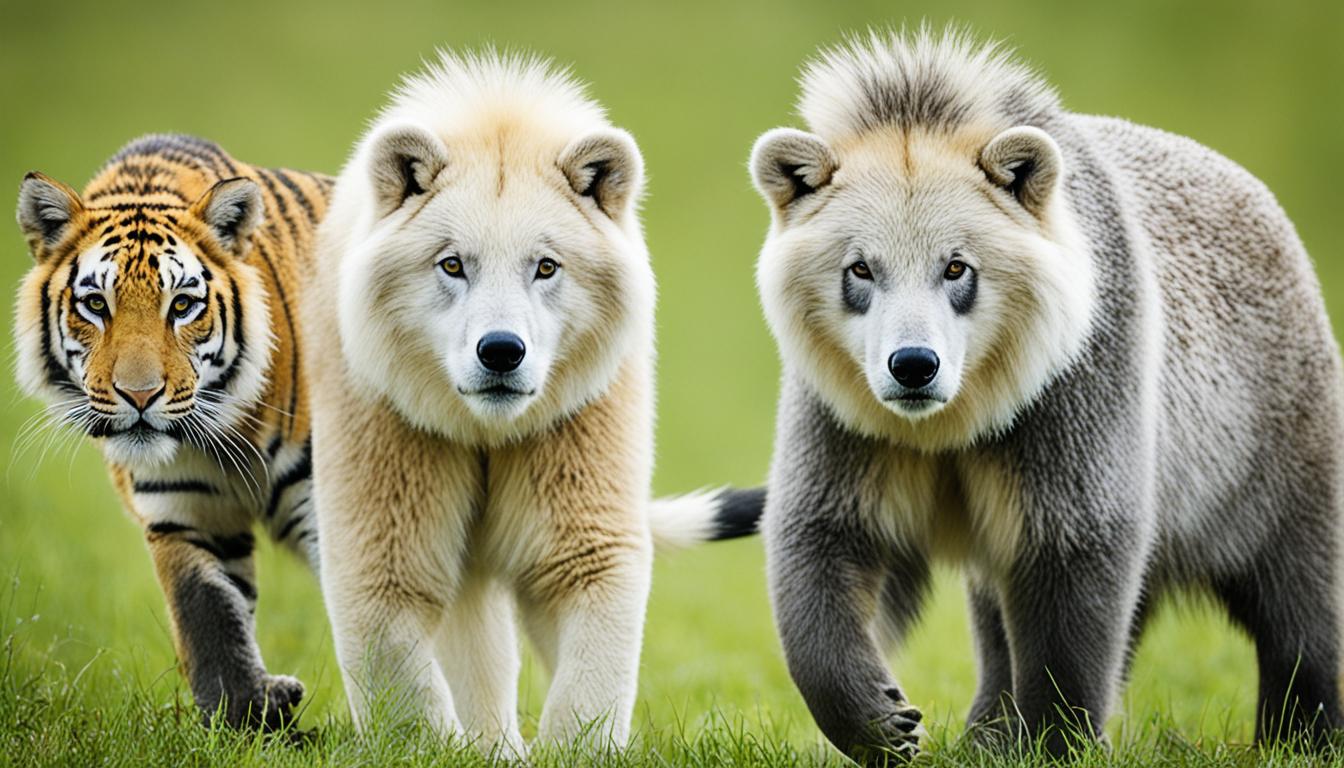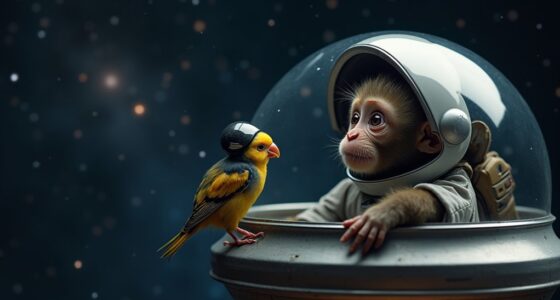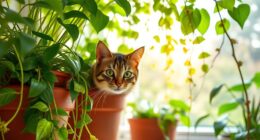Did you know that in the animal kingdom there are beings that humans may consider unattractive? These creatures have traits that go against our traditional notions of beauty. Yet, beyond their less appealing looks, they exhibit fascinating adaptations and behaviors that truly set them apart.
From hairless bodies to bulbous noses and tentacle-like organs, these animals defy traditional notions of attractiveness. Despite being labeled as ugly, they play vital roles in their ecosystems and deserve our appreciation and protection. In this article, we will explore the world of ugly animals and discover the hidden beauty that lies within their unique appearances.
Key Takeaways:
- Ugly animals challenge conventional ideas of beauty and possess unique features and characteristics.
- Understanding the adaptations and behaviors of ugly animals can help us appreciate their beauty.
- Conservation efforts are important to protect the biodiversity and integrity of ecosystems.
- Success stories in preserving unattractive species provide hope for their survival.
- Embracing the diversity of life expands our understanding of beauty and deepens our connection to the natural world.
Common Traits of Unattractive Species
Many species that are labeled as the ugliest exhibit common traits that are perceived as unattractive. These traits include hairless bodies, like the naked mole-rat, and bulbous noses, as seen in the proboscis monkey. Other characteristics that often fall into this category are tentacle-like organs, as seen in octopuses, and bulging eyes, like those of the tarsier. These traits can provoke a sense of discomfort or surprise in humans, as they deviate from the norm of furry bodies and proportional facial features.
Despite being considered unattractive, these species possess unique adaptations that enable their survival in their respective environments. While their appearances may not conform to conventional standards of beauty, they serve important ecological roles and contribute to the overall biodiversity of our planet.
Examples of Unattractive Species and their Common Traits
| Species | Common Traits |
|---|---|
| Naked Mole-Rat | Hairless body |
| Proboscis Monkey | Bulbous nose |
| Octopus | Tentacle-like organs |
| Tarsier | Bulging eyes |
These examples illustrate the diverse range of unattractive species and the common traits they possess. It is important to appreciate that beauty goes beyond superficial aesthetics and delve into the fascinating adaptations and characteristics that make these species truly unique.
Misunderstood Beauty
What may initially appear repulsive can, upon closer examination, reveal an animal’s specialized adaptations or a misunderstood form of allure. Take, for example, the aye-aye. This unique primate possesses large ears and wart-like growths that may be considered unsightly at first glance. However, these distinct features serve a purpose – the large ears help the aye-aye detect the movements of insects, while the wart-like growths aid in communication and territorial marking.
Another fascinating example of misunderstood beauty is the roti island snake-necked turtle. This turtle species is known for its long neck, which may appear unusual or unsightly to some. However, the long neck allows the turtle to strike out at prey with lightning speed, making it a skilled and efficient hunter.

The Matamata Turtle
The matamata turtle, with its wrinkled skin, strange head shape, and fringed snout, is another creature that defies traditional beauty standards. Despite its odd appearance, the matamata turtle’s unique adaptations are perfectly suited to its environment. Its flat, wide head and textured skin help it blend seamlessly into the forest floor, allowing it to ambush unsuspecting prey.
“Nature is full of surprises, and it is through the exploration of these surprising adaptations that we can truly appreciate the beauty found in every corner of the animal kingdom.”
Understanding the reasons behind certain animals’ unusual appearances is crucial in appreciating their unique beauty. It is a reminder that beauty comes in many forms, and what may be perceived as ugly or repulsive at first can reveal hidden wonders upon closer inspection.
Let’s explore some more examples of misunderstood beauty in the animal kingdom:
| Animal | Unique Adaptations |
|---|---|
| Axolotl | Regenerative abilities, external gills |
| Naked Mole-Rat | Eusocial behavior, resistance to cancer |
| Proboscis Monkey | Long, bulbous nose for attracting mates |
| Star-Nosed Mole | Sensory “star” nose for efficient foraging |
Aquatic Oddities
The deep sea is a mesmerizing realm filled with fascinating and peculiar creatures. These aquatic oddities showcase nature’s remarkable ability to create incredible and diverse organisms that defy conventional standards of beauty. From the gelatinous blobfish to the terrifying anglerfish, the underwater world is home to a plethora of ugly marine creatures that captivate and astonish.
The blobfish (Psychrolutes marcidus) is frequently hailed as the world’s ugliest animal. With its saggy, gelatinous skin and droopy face, the blobfish has even been likened to a grumpy old man. Despite its unflattering appearance, the blobfish possesses unique adaptations that allow it to thrive in the deep-sea environment. It has a low-density body and tends to float close to the seabed, where its gelatinous flesh is better suited to withstand the high-pressure conditions.

The red-lipped batfish (Ogcocephalus darwini) is another peculiar inhabitant of the ocean depths. With its bright crimson pout and unusual appendages on its head that resemble feet, this fish is a true oddity. It “walks” along the ocean floor using its modified fins, adopting a rather comical and awkward gait. While its appearance may be unconventional, the red-lipped batfish possesses remarkable adaptations that aid in scavenging for food.
The deep-sea anglerfish family (Melanocetidae) is a group of menacing predators that have become iconic for their frightful appearance. The females of many anglerfish species possess a bioluminescent lure on their heads, which they use to attract prey in the darkness of the deep waters. These eerie-looking creatures, with their gaping mouths and elongated bodies, are the stuff of nightmares for many. Yet, they are a testament to the extraordinary adaptations that have evolved in the harsh conditions of the deep sea.
Additional examples of aquatic oddities include the giant Chinese salamander (Andrias davidianus), the largest amphibian in the world, known for its wrinkled skin and bizarre facial features, and the purple frog (Nasikabatrachus sahyadrensis), a peculiar amphibian found in the Western Ghats of India, with a plump body and a pig-like snout.
| Aquatic Oddities | Appearance | Notable Features |
|---|---|---|
| Blobfish | Saggy and gelatinous | Floats close to the seabed with low-density body |
| Red-lipped batfish | Bright crimson pout with feet-like appendages | Uses modified fins to “walk” along the ocean floor |
| Anglerfish | Gaping mouth and elongated body | Bioluminescent lure on the head to attract prey |
| Giant Chinese salamander | Wrinkled skin and bizarre facial features | The largest amphibian in the world |
| Purple frog | Plump body and pig-like snout | Found in the Western Ghats of India |
Terrestrial Peculiarities
On land, there are several odd-looking animals that challenge conventional aesthetics. These terrestrial peculiarities captivate us with their unique appearances and intriguing behaviors, reminding us that beauty comes in many forms. Let’s explore some of these fascinating land creatures that defy traditional notions of attractiveness.
The Naked Mole Rat
One of the most peculiar land animals is the naked mole rat. Despite its hairless, wrinkly skin and toothy grin, this small rodent fascinates scientists with its remarkable adaptations and eusocial behavior. It tunnels underground, creating an intricate network of burrows and living in highly organized colonies. Though visually distinct, the naked mole rat’s unusual appearance and social structure highlight the incredible diversity found in the animal kingdom.
The Bald Uakari
Resembling an old wise man of the forest, the bald uakari stands out with its bright red face and bald head. Found in the Amazon rainforest, this unique primate’s striking features are a result of reduced blood flow and a lack of pigment in its facial skin. While its appearance may be unconventional, the bald uakari serves as a reminder of the incredible adaptability of life and the endless variations in nature’s creations.
Warthog and Hyena
The warthog and hyena are two land animals with distinct appearances that challenge our aesthetic sensibilities. The warthog’s facial warts, pronounced tusks, and bristly mane give it a rugged and unconventional charm. Meanwhile, the hyena, often associated with a somewhat sinister reputation, possesses a unique combination of features such as a robust build, unconventional stance, and powerful jaws. Despite their unconventional looks, these animals exhibit remarkable intelligence and complex social structures, exemplifying nature’s ingenuity in adaptation and survival.

These examples represent just a glimpse into the world of terrestrial oddities. As we delve deeper into the diverse array of land animals, we discover the intricate and often unexpected beauty that lies beneath their unconventional exteriors. By embracing the peculiarities of these creatures, we gain a greater appreciation for the rich tapestry of life on Earth.
Avian Anomalies
In the world of birds, there are several species that stand out with their unusual appearances. These avian anomalies captivate the imagination with their distinctive features and unique adaptations. From balding storks to prehistoric-looking shoebills, these birds challenge traditional notions of beauty and showcase the diverse wonders of nature.
The marabou stork, found in Africa, is often considered one of the most distinctive birds due to its balding head and massive bill. This large and imposing bird commands attention with its unusual appearance and impressive size.
The shoebill, with its bill that closely resembles an old shoe, is another remarkable avian anomaly. This prehistoric-looking bird is known for its unsettling stillness and commanding presence. Its appearance is a testament to the incredible diversity found in the avian world.
Two other birds that deserve mention are the California condor and the Andean condor. These majestic creatures both possess bald heads, which are adaptations that aid in scavenging. Despite their unusual appearance, these birds are symbols of power and resilience.
Avian Anomalies: Unusual-Looking Birds
To further explore the unique appearances of these avian anomalies, let’s take a closer look at their distinct characteristics:
| Bird | Distinctive Features | Image |
|---|---|---|
| Marabou Stork | Balding head, massive bill |  |
| Shoebill | Bill resembling an old shoe, unsettling stillness | |
| California Condor | Bald head, large wingspan | |
| Andean Condor | Bald head, impressive size |
These remarkable birds showcase the astonishing diversity and adaptability of avian species. Their unusual appearances only serve to highlight the wonders of nature and the intricate designs found in even the most unexpected places.
Conservation of Ugly Animals
Despite not being considered conventionally attractive, it is important to extend conservation efforts to so-called “ugly” animals. These creatures, such as the Chinese giant salamander and Saiga antelope, play crucial roles in their ecosystems, contributing to biodiversity and maintaining the delicate balance of nature. Protecting their habitats and ensuring their survival is essential for the overall health of the environment.
One of the main challenges in conserving these unattractive species is the lack of public interest and funding. Unlike flagship species that capture public attention, these animals often go unnoticed and receive less support for conservation initiatives. However, overlooking them would be a grave mistake as their preservation is just as important as that of more visually appealing species.
“Conservation of ugly animals is not just about aesthetics; it is about protecting the intricate web of life on our planet,” says Dr. Jane Andrews, a renowned biologist specializing in wildlife conservation. “These animals have unique adaptations and fulfill important ecological roles. By protecting them, we not only ensure their survival but also safeguard the health and resilience of entire ecosystems.”
Habitat Preservation
Habitat loss is a major threat to the survival of ugly animals. As human activities continue to encroach on natural habitats, these creatures often find themselves displaced or without suitable environments to thrive in. By actively conserving their habitats through measures such as protected areas, reforestation, and sustainable land-use practices, we can provide these animals with the resources they need to survive and reproduce.
Public Awareness and Education
Raising public awareness about the importance of protecting unattractive species is crucial. Educating communities, schools, and individuals about their ecological significance can help shift perceptions and garner support for their conservation. By showcasing the unique traits and contributions of these animals, we can challenge societal judgments of beauty and cultivate a deeper appreciation for the diversity that exists in the natural world.
| Ugly Animal | Habitat | Conservation Status |
|---|---|---|
| Chinese Giant Salamander | Rivers and Streams | Endangered |
| Saiga Antelope | Grasslands and Steppes | Critically Endangered |
Financial Support
Funding plays a vital role in conservation efforts. Governments, organizations, and individuals can contribute by providing financial support for research, habitat protection, and conservation programs dedicated to unattractive species. By investing in the preservation of these animals, we invest in the health and long-term sustainability of our ecosystems.
“Protecting ugly animals is not a matter of personal preference, but a responsibility we owe to nature. Every species has its place and contributes to the intricate web of life,” comments Dr. Sarah Parker, a leading wildlife conservationist. “By protecting unattractive species, we preserve the integrity of our ecosystems and ensure the survival of all forms of life.”
Efforts to protect and preserve these “ugly” animals can lead to inspiring success stories, showcasing the importance of their conservation. As public awareness grows and funding increases, we can create a future where all species, regardless of their appearance, are valued and protected for their unique contributions to the natural world.
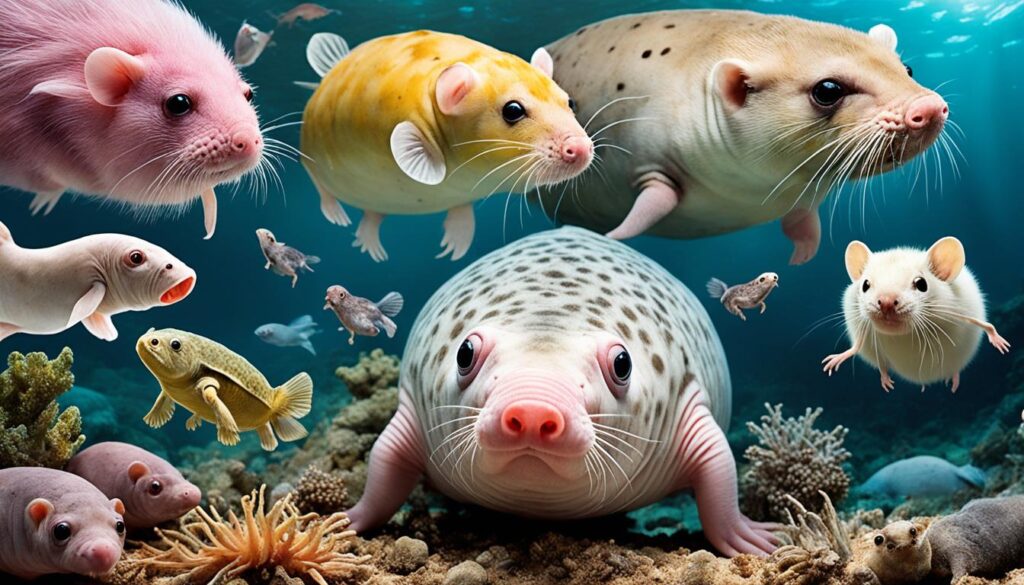
Success Stories in Conservation
Despite the challenges in conserving species deemed unattractive, there have been success stories. One such success story is the conservation efforts focused on the saiga antelope, despite its unique and bulbous appearance.
The saiga antelope is a peculiar-looking creature with its distinctive nose that hangs down like a strange proboscis. However, this unattractive feature has not hindered the species’ preservation. Through targeted actions and conservation initiatives, the saiga antelope population has been on the rise in recent years, demonstrating that even the most unlikely candidates can overcome the odds and thrive.
“Conservation efforts for the saiga antelope have shown that looks can be deceiving. Despite being considered unattractive, this remarkable species has proven that it is equally deserving of our attention and protection.”
These success stories provide hope for other species often overlooked or sidelined due to their appearance. They serve as a reminder of the importance of preserving diversity and protecting all species on Earth, regardless of their aesthetic appeal.
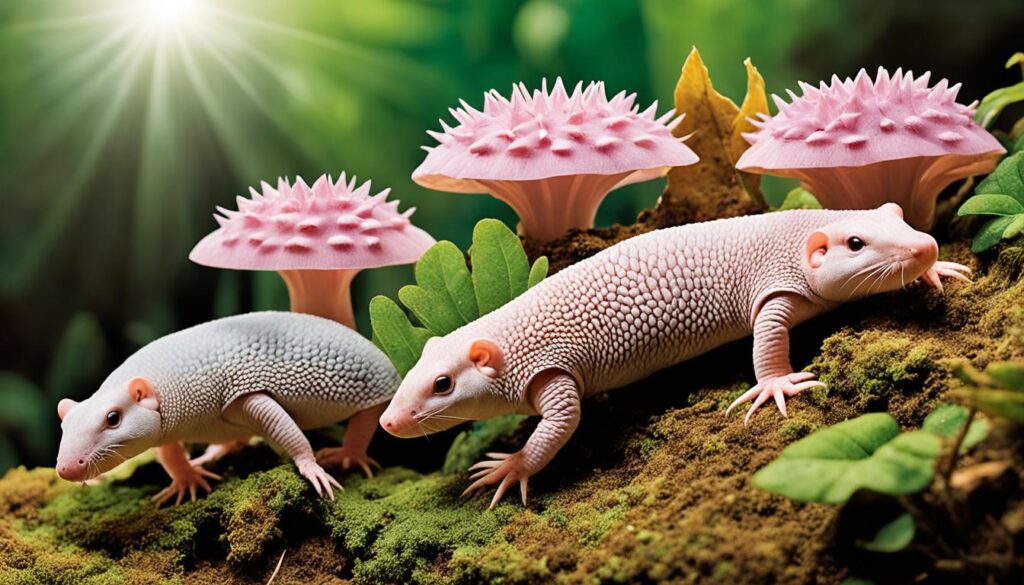
Successful Conservation Efforts for Unattractive species
| Species | Unique Features | Conservation Successes |
|---|---|---|
| Saiga Antelope | Bulbous nose | Population on the rise due to targeted actions and initiatives |
| Species 2 | Unique features | Conservation successes |
| Species 3 | Unique features | Conservation successes |
The table above showcases successful conservation efforts for unattractive species. While the saiga antelope has been a standout example, there are other species with unique features that have also seen conservation successes. These triumphs demonstrate the importance of prioritizing the preservation of all species, irrespective of their appearance.
Why Ugly Animal Preservation Matters
Preserving and protecting unattractive animals is crucial for maintaining biodiversity and the integrity of the environment. These animals, despite their unconventional appearances, play significant roles in their respective ecosystems. The loss of species like the Chinese giant salamander, Californian condor, and saiga antelope would have far-reaching ecological impacts.
However, the preservation of these ugly animals faces challenges, primarily due to the lack of public interest and funding. Many people may overlook or underestimate their value and importance to the natural world. To ensure their survival, it is imperative to raise awareness about the significance of these creatures and promote the appreciation of their unique qualities.
Ugly animal preservation is not just about protecting individual species; it is about safeguarding the delicate balance of nature and preserving the intricate web of life. Each species, no matter how unattractive it may seem, contributes to the overall health and functioning of ecosystems.
“Ugly animals may not have the visual appeal of other charismatic species, but they are an integral part of our planet’s diverse tapestry, and their conservation is essential for the long-term well-being of our ecosystems.”
By emphasizing the importance of conservation efforts for ugly animals, we can instill a sense of responsibility and encourage action. Through education, outreach, and effective advocacy, we can inspire individuals and communities to support initiatives dedicated to preserving and protecting these unattractive yet vital creatures.
Furthermore, promoting the conservation of ugly animals can have far-reaching benefits beyond biodiversity preservation. By valuing and protecting these unique species, we acknowledge the inherent worth of every living being and reinforce the interconnectedness of all life forms.
Key Takeaways:
- Preserving and protecting ugly animals is crucial for maintaining biodiversity.
- Species like the Chinese giant salamander, Californian condor, and saiga antelope play important roles in their ecosystems.
- The lack of public interest and funding remains a challenge in conservation efforts for these animals.
- Emphasizing the value and unique qualities of ugly animals is essential for their survival.

The Fascination with Ugly Animals
The fascination with ugly animals stems from our innate curiosity and appreciation for the wonders of nature. While they may not fit traditional ideas of beauty, these creatures capture our attention and affection through their unique appearances and exceptional qualities. By embracing and celebrating the diversity of life, including animals that are considered ugly, we expand our understanding of beauty and treasure the uniqueness of all living beings. The enduring popularity of these animals in popular culture further emphasizes our fascination with their unconventional beauty.
Conclusion
In conclusion, the world of ugly animals is filled with captivating and exceptional creatures that defy conventional beauty standards. These unique creatures challenge our notions of attractiveness and inspire us to embrace the beauty found in diversity. They remind us that beauty is not limited to conventional standards, but can be found in the most unexpected places.
By celebrating the unique qualities and adaptations of these animals, we open ourselves up to a wider perspective on beauty. It is through embracing the unconventional and appreciating the wonders of nature that we deepen our connection to the natural world. These creatures teach us that there is beauty to be found in every corner of the Earth, if we are willing to look beyond superficial judgments.
Embracing beauty in ugliness allows us to recognize the incredible resilience and value that these animals bring to our ecosystems. From the deep sea to the terrestrial realm, these creatures play important roles in maintaining the balance of nature. By preserving and protecting them, we ensure the preservation of biodiversity and the integrity of our planet.
